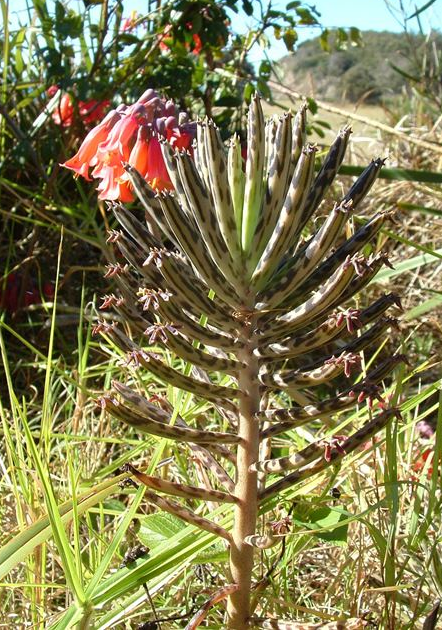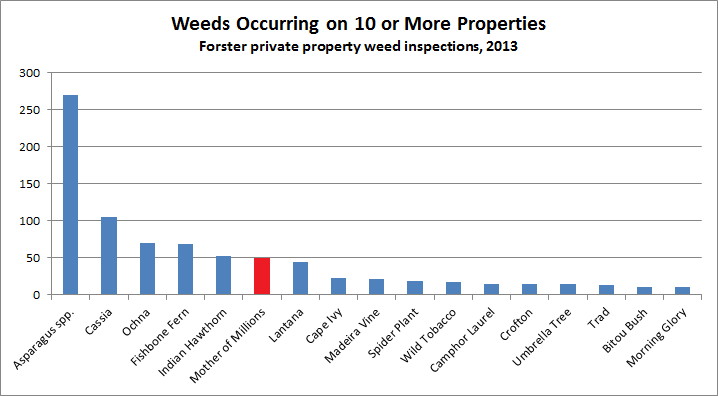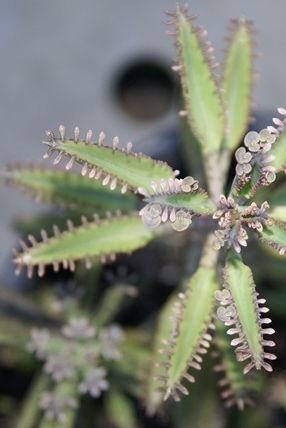Mother of Millions

Mother of Millions is a poisonous plant which can pose a serious risk to stock. Poisoned cattle can die of heart failure. It is also poisonous to people and household pets, with dogs being particularly susceptible. The toxins are present in all parts of the plant, however the flowers are five times more poisonous than the leaves and stems. The plant flowers between May and October. A native of Madagascar, Mother of Millions is adaptable to very dry conditions.
Mother of Millions is a Class 4 Noxious Weed in our area. This means that "the growth of the plant must be managed in a manner that continuously inhibits the ability of the plant to spread and the plant must not be sold, propagated or knowingly distributed".
"Mother of Millions" is a very apt name for this plant. As well as producing hundreds of seeds which can survive in the soil for a number of years, the plants also reproduce "vegetatively". Each plant produces small plantlets along the edges of its leaves which detach and form new plants. Any parts of the plant that fall to the ground, dropped during control efforts, or spread via mowing or slashing can put down roots and re-establish as new plants.


Mother of Millions were found on 50 properties during the Noxious and environmental weed inspections in Forster in 2013:

This photo of a road verge shows the potential for Mother of Millions to form dense communities and spread into bushland.
This patch in Tuncurry probably began from seeds or plant parts inadvertently brought in on machinery, blowing off a trailer, or deliberate green-waste dumping.

Control
To control Mother of Millions, it is best to hand-pull plants. Although individual plants are easy to remove, infestations are difficult to control due to the ability of all seeds and plant parts left behind to re-shoot. All plants parts should be either bagged and placed in the red bin, or burnt. Follow-up weeding is a must, as seeds and dropped plant parts will otherwise quickly re-infest the site.

Look out for....
Some closely related species are shown below.



Left and centre, Bryophyllum pinnatum. Right, Bryophyllum x houghtonii, clearly showing plantlets growing along leaf edges.
More information
Check out the NSW WeedWise page for more on the Mother of Millions.